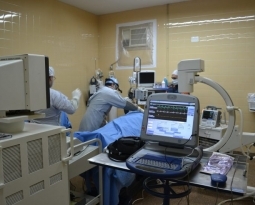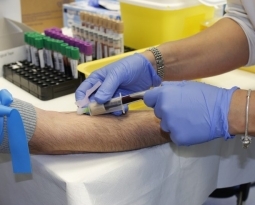Oregon Patent of the Month – July 2023
VisCardia, Inc., a privately held medical device developer in Portland, Oregon, has been granted a patent for their approach to improving hemodynamic performance through asymptomatic diaphragm stimulation. Their approach is made possible by their proprietary implantable cardiac device. The company has also recently concluded preclinical and First-in-Human trials to demonstrate safety of the implant procedure and its proprietary Synchronized Diaphragmatic Stimulation™ therapy.
This therapeutic approach has the potential to revolutionize the treatment of severe congestive heart failure and improve hemodynamic performance in patients.
The implantable cardiac device comprises several key components that work synergistically to deliver remarkable results. At its core is a diaphragm lead that can be implanted directly on or adjacent to the diaphragm. In addition, one or more cardiac leads are implanted within or on the heart. These leads serve as conduits for electrical stimulation and sensing of cardiac events.
An electrical circuit is responsible for detecting cardiac events in the cardiac cycle, based on signals sensed through the cardiac leads. Once a cardiac event is detected, the device springs into action, delivering asymptomatic electrical stimulation therapy to the diaphragm through the diaphragm lead.
What makes this device truly remarkable is its ability to improve hemodynamic performance without causing additional strain on the heart. Unlike traditional cardiac devices that rely on endocardial leads, VisCardia’s device offers a unique approach. By stimulating the diaphragm, it bypasses the risk of unwanted stimulation of skeletal muscle, such as the left phrenic nerve, which can cause involuntary contractions of the diaphragm.
The implications of this device extend beyond improving systolic function. For patients already implanted with a cardiac rhythm management (CRM) device, the implantable cardiac device can work in conjunction with it to enhance hemodynamic performance. By delivering electrical stimulation therapy directly to the diaphragm, VisCardia’s device offers a non-invasive solution that augments mechanical cardiac functions without overburdening the already compromised cardiac musculature.
The device can be triggered by either atrial or ventricular cardiac events, offering flexibility in treatment options. The device’s electrical circuit structure is designed to determine the occurrence of valid cardiac events and adjust the timing of the asymptomatic electrical stimulation therapy accordingly. This ensures that the therapy is delivered precisely when needed, optimizing its effectiveness.
VisCardia’s implantable cardiac device represents a significant leap forward in the field of cardiology. By improving hemodynamic performance through diaphragmatic stimulation, it offers a less invasive alternative to traditional therapies. With its potential to reduce patient symptoms and enhance quality of life, this device holds immense promise for individuals suffering from severe congestive heart failure.
Are you developing new technology for an existing application? Did you know your development work could be eligible for the R&D Tax Credit and you can receive up to 14% back on your expenses? Even if your development isn’t successful your work may still qualify for R&D credits (i.e. you don’t need to have a patent to qualify). To find out more, please contact a Swanson Reed R&D Specialist today or check out our free online eligibility test.
Who We Are:
Swanson Reed is one of the U.S.’ largest Specialist R&D tax advisory firms. We manage all facets of the R&D tax credit program, from claim preparation and audit compliance to claim disputes.
Swanson Reed regularly hosts free webinars and provides free IRS CE and CPE credits for CPAs. For more information please visit us at www.swansonreed.com/webinars or contact your usual Swanson Reed representative.

















